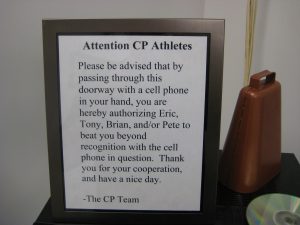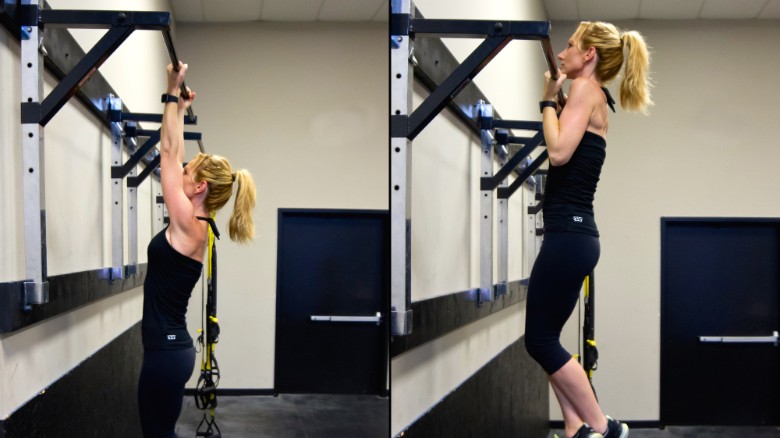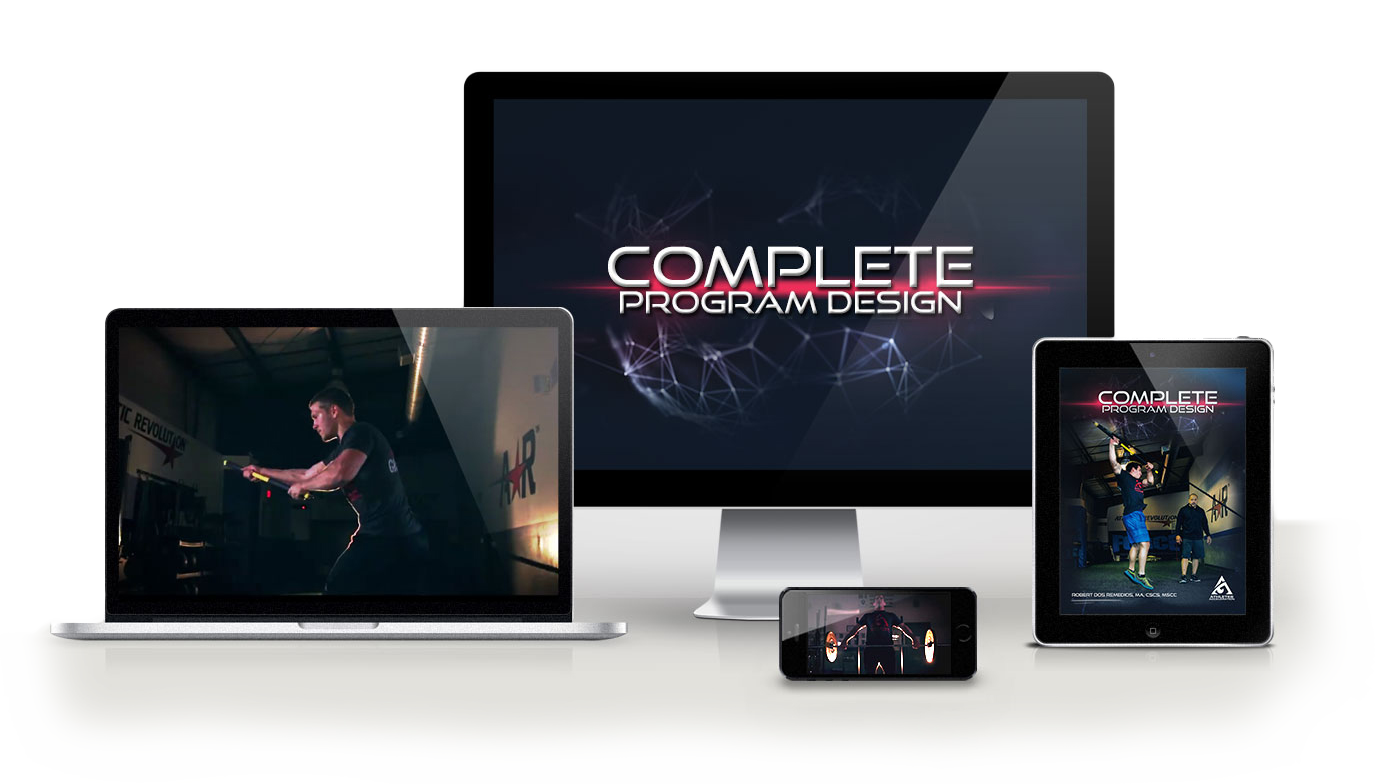My wife, Lisa, is taking the reigns today. She’s teaming with Artemis Scantalides for the I Am Not Afraid To Lift workshop at Iron Body Studios this November, and will speak to more of the psychological barriers that exist which often stagnate people’s progress in the gym.
We’re often our own worst enemy, and our inner dialogue can play tricky – sometimes harmful – games with our mind(s).
Lisa’s a psychologist (pretty much the best one in the world)1, leads an active lifestyle (she lifts heavy things and teaches several spin classes a week. So, you could say she’s a doctor who actually lifts), and sees a ton of value in combining both the power of the mind and the power of the barbell and using them in a synergistic manner.
In today’s post she discusses the concept of Metacognition, which sounds like an X-Men character but it’s not. It’s still cool though. You should totes read about it below.
Enjoy,.
Find Your “Flow” With Metacognition
Think about your thinking. Right at this moment.
What’s running through your mind right now? In that last minute? In the last hour? Sure, you’re reading these sentences, and maybe thinking about them, but you’re probably also thinking about one, or two, or seven other things, right now.
Before you continue reading, take a minute to observe your thoughts. If that’s too long, shoot for 30 seconds – you can set a timer. Don’t change them, just notice. Eyes open or closed, being still or moving… listen to your inner monologue…
What did you notice? Positive thoughts? Negative thoughts? Worries? Day dreams? Shoulds? To-Do’s? Hopes? Judgments?
Your thoughts are layered.
Your thoughts are constant.
Your thoughts influence your feelings and shape your behavior.
The exciting part is, you can control your very own thoughts and use them to improve every aspect of your life: work, relationships, and your training. You can learn what thoughts are helpful, and which aren’t, and then you can use them, shape them, change and augment them, to enhance your performance and your passion for your goals.
Thinking about thinking, or metacognition, is one of the nifty skills that set us humans apart from the rest of the animal kingdom. Not only can we be aware of our thoughts and reflect on them, but we can consciously change them.
When your thoughts are connected to the present moment, your emotions and behaviors will be as well. When your thoughts align with your goals, you are at your best; in your Zone! In other words, 100% percent of your thoughts are focused on your training. What do you do, or what can you do, to get yourself 100% present and focused on your workout?
your thoughts align with your goals, you are at your best; in your Zone! In other words, 100% percent of your thoughts are focused on your training. What do you do, or what can you do, to get yourself 100% present and focused on your workout?
Mihaly Csikszentmihalyi, one of my favorite psychologists, studied being in the zone, or what he calls “Flow” (1990). I’ve heard athletes and clients call it their “vibe”, or “space”, but whatever you call it, that’s the place you want to be when you train. Being in flow means that your mindset contains only constructive thoughts about the present moment. It means you and your thoughts are fully engaged in a goal-directed activity. Csikszentmihalyi explains:
“The optimal state of inner experience is one in which there is order in consciousness. This happens when psychic energy – or attention – is invested in realistic goals, and when skills match the opportunities for action. The pursuit of a goal brings order in awareness because a person must concentrate attention on the task at hand and momentarily forget everything else… By stretching skills, by reaching toward higher challenges, a person becomes an increasingly extraordinary individual” (p. 6).
When you train, what is the content of your thoughts?
One way I ask clients about this is by asking them to visualize their own mental pie chart.
If you can imagine a pie chart that represents all the various thoughts and appraisals you have during your training sessions, what are the slices inside the pie? How much space does each slice take up?
Are your thoughts unified and present, or are they splintered and disconnected from your workout?
Are you squatting while wondering about your email?
Swinging a kettlebell and taking an inventory of what’s in the fridge to whip up for dinner later on?
Thinking of some moron who never texted you back, or that tricky situation with your boss, and feeling angry or badly about yourself while trying to bench press?
Being one place in your mind and another with your body can impair performance and suck all the fun out of your training. When you are in the present moment, and your thoughts, feelings, and actions are lined up, fired up, and rolling along in your zone, you love it! It helps you, it changes you. It creates an opportunity for you to become better than you are.
The benefits to being in the zone, or flow, are both physical and psychological.
Your performance is maximized when you are present and focused on your training, which means you can train harder and progress more efficiently toward your goal. In addition, being in flow while training improves well-being, enjoyment of a goal directed activity, and leads to happiness, both in and out of the gym.
So, how about thinking about your thinking, and making some changes, in the name of better workouts?
Increased happiness? Bigger lifts?
To do this, you want to:
1. Minimize unrelated and distracting thoughts during your workout (those would be about errands, emails, relationships, and on and on) and,
2. Negative thoughts about your self, or negative self talk (“What if I can’t do the pull up and people at the gym see me look ridiculous?” or “I’ll never be able to deadlift 2x body weight.”).
Instead, your mental pie chart should be comprised of:
1. Task oriented thoughts and goals (“Inhale, hinge, sit back, drive, follow through!”), and
2. Positive self talk (“I can push myself and progress my training to do a pull up… I love to deadlift and know I can keep working hard and improve my PR!”)
Your prefrontal cortex is a highly evolved, super-fast, multitasking mammajamma, that communicates with your body, your awareness, and your emotions, to push you, drive you, and propel you toward your goals.
You may not be able to control your feelings, but you can control your thoughts. Then thoughts shape feelings. And feelings shape behavior. Your behavior will then impact your thoughts, and the cycle can either be facilitative or detrimental to your performance, your goals, and your enjoyment of your pursuits.
You can improve your training by honing your mental skills.
You can progress your mental fitness, or mental toughness, by creating a mindset that is 100% focused on your goals and fully present during your workout.
I hope thinking about your thinking can help you with your very next workout!
Just begin by noticing the content of your thoughts.
Visualize your mental pie chart, and take a look at what’s inside.
Then identify useful cues and positive statements about yourself and your training to facilitate your goals. Finally, practice! The same way you practice your physical skills, being 100% present and mentally tough means that you practice positive self talk over, and over, and over again. Thank you for reading.
I Am Not Afraid to Lift Workshop
Still interested in learning more?
I’ll be joining Artemis on November 7th at Iron Body Studios just outside of Boston to provide psychological consultation at the I Am Not Afraid To Lift workshop!
Mental skills including positive self talk and goal setting techniques will be reviewed in conjunction with physical skills. If you’re interested, hope to see you there!
Learn more and register for I Am Not Afraid To Lift below…
Early bird ends on October 11, 2015.
Learn more about the workshop HERE.
Register for the workshop HERE under the “Events” tab.
About the Author
 Dr. Lisa Lewis is a licensed psychologist with a passion for wellness and fitness. She earned her doctorate in counseling psychology with a specialization in sport psychology at Boston University, and her doctoral research focused on exercise motivation. She uses a strength-based, solution-focused approach and most enjoys working with athletes and athletically-minded clients who are working toward a specific goal or achievement.
Dr. Lisa Lewis is a licensed psychologist with a passion for wellness and fitness. She earned her doctorate in counseling psychology with a specialization in sport psychology at Boston University, and her doctoral research focused on exercise motivation. She uses a strength-based, solution-focused approach and most enjoys working with athletes and athletically-minded clients who are working toward a specific goal or achievement.
Lisa is also a certified drug and alcohol counselor, and has taught undergraduate courses as an adjunct professor at Salem University, Wheelock College, and Northeastern University in courses including exercise psychology, developmental psychology, and abnormal psychology. Lisa currently works as the assistant director of a college counseling center in Boston, MA, and she has a small private practice in the nearby town of Brookline.
As a new addition to the “I Am Not Afraid To Lift” workshop, Lisa will integrate mental skills into the physical skills training of the day. Mental skills can enhance performance, maximize motivation and prevent barriers like negative thinking, fear, and self-doubt from interfering with goals.

 It’s every bit as much of a learned skill as acting, throwing a baseball, learning to play guitar, or finally beating Mike Tyson in Mike Tyson’s Punch Out.
It’s every bit as much of a learned skill as acting, throwing a baseball, learning to play guitar, or finally beating Mike Tyson in Mike Tyson’s Punch Out.











